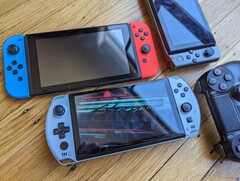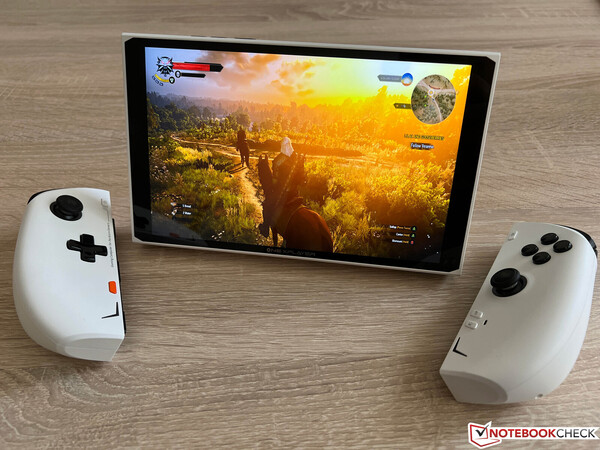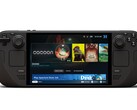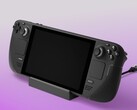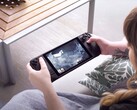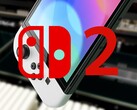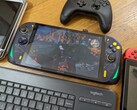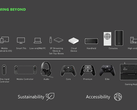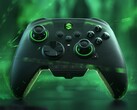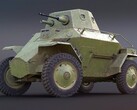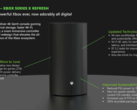1. Asus ROG Ally (88%) is an affordable powerhouse
The Asus ROG Ally was announced in April 2023 in what must be the best April Fool's prank in history — mostly because it wasn't a prank at all. The Ally is powered by an AMD Ryzen Z1 or Ryzen Z1 Extreme — the best AMD has to offer for handhelds in its Ryzen line-up.
With eight Zen4 cores and its Radeon 780M RDNA 3 iGPU with 12 CUs, the Ally promises excellent performance in both graphics and CPU workloads. Our review of the Ally backs up Asus's performance claims, exhibiting CPU performance on par with many gaming laptops. The GPU isn't too far behind, all things considered, and it should prove plenty powerful enough to run even demanding titles at 1080p with low to medium settings.
Part of what sets the Ally apart is its display. It's a bright, seven-inch, 1080p unit with a 120 Hz refresh rate and AMD FreeSync Premium for tear-free gaming between 48 and 120 fps. We also found the ergonomics of the Ally quite comfortable, thanks to the lightweight chassis and textured grips. Moreover, the grips remain cool, even when the device is under load.
Asus goes the extra mile with the Ally when it comes to support, too. A veritable treasure trove of spares for the Ally can be found at Asus's online spares partner.
The Ally also strikes a good balance between performance and price, given its US$599.99 to US$699.99 (at the time of writing) price.
Buy the Asus ROG Ally with the AMD Z1 Extreme and a 512 GB NVMe SSD for US$699.99 at BestBuy.
2. GPD Win 4 is the compact choice
GPD has always taken a different approach when it comes to its handheld gaming PCs, and the US$1,000 GPD Win 4's compact chassis with its sliding screen certainly gives it an edge over the competition. The Win 4 still relies on the octa-core AMD Ryzen 7 6800U and its Radeon 680M iGPU to power the gaming experience.
The processor and GPU pairing produced pleasing results in our review of the GPD Win 4, scoring only 1% lower than the average 6800U in multi-threaded CPU tasks. The GPU, on the other hand, manages to play even some AAA games at 1080p native resolution after some settings tweaks.
Design is one element of the GPD Win 4 that's also worth pointing out, since the device clearly takes inspiration from the PS Vita, with a magnesium alloy frame and a plastic shell. The slide-out touch display is a six-inch, 1080p unit that runs at 60 Hz and has Gorilla Glass 5 protection over the top.
For those looking for a compact handheld gaming experience and are willing to sacrifice slightly on the display quality, the GPD Win 4 is a great choice, with performance on par with many notebooks that have much larger footprints.
Since our review of the GPD Win 4 went live, GPD has updated the Win 4, adding the AMD Ryzen 7 7840U and Ryzen 5 7640U APUs with the Radeon 780M and 760M iGPUs for a moderate performance update.
3. OneXPlayer 2 (84%) for Switch-like detachable controllers
Much like the GPD Win 4, the OneXPlayer 2 has the AMD Ryzen 7 6800U at its beating heart, putting it slightly behind the Asus ROG Ally in terms of performance. What sets the OneXPlayer 2 apart from its contemporaries is its sizeable 8.4-inch display and detachable controllers. Its biggest weakness is the US$1,480 starting price.
This colossal Windows-powered handheld takes a few tricks out of Nintendo's book with its removable controllers, but it ultimately follows the same winning formula as many of the other Ryzen-based handhelds on the market. That's not a bad thing, given the impressive gaming performance that can be achieved with that APU and some TDP fiddling.
The 8.4-inch, 2,560 × 1600 IPS display of the OneXPlayer 2 runs at 60 Hz, but the low refresh rate and large form factor enable the device to get rather spectacular battery life in our review. In demanding games, specifically The Witcher 3 in our tests, the OneXPlayer 2 scored well above the average of all the other handhelds we have tested.
Source(s)
Notebookcheck reviews




